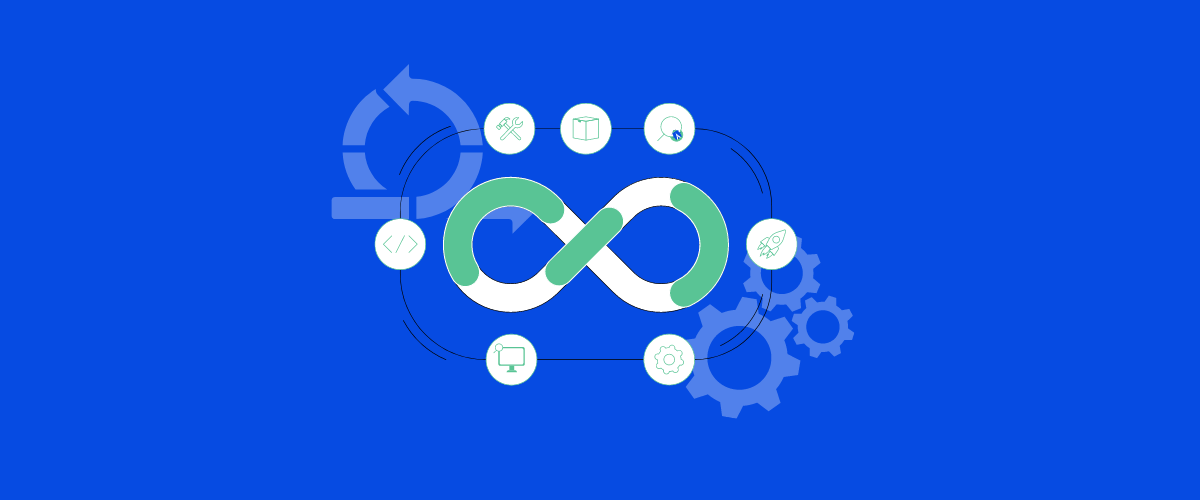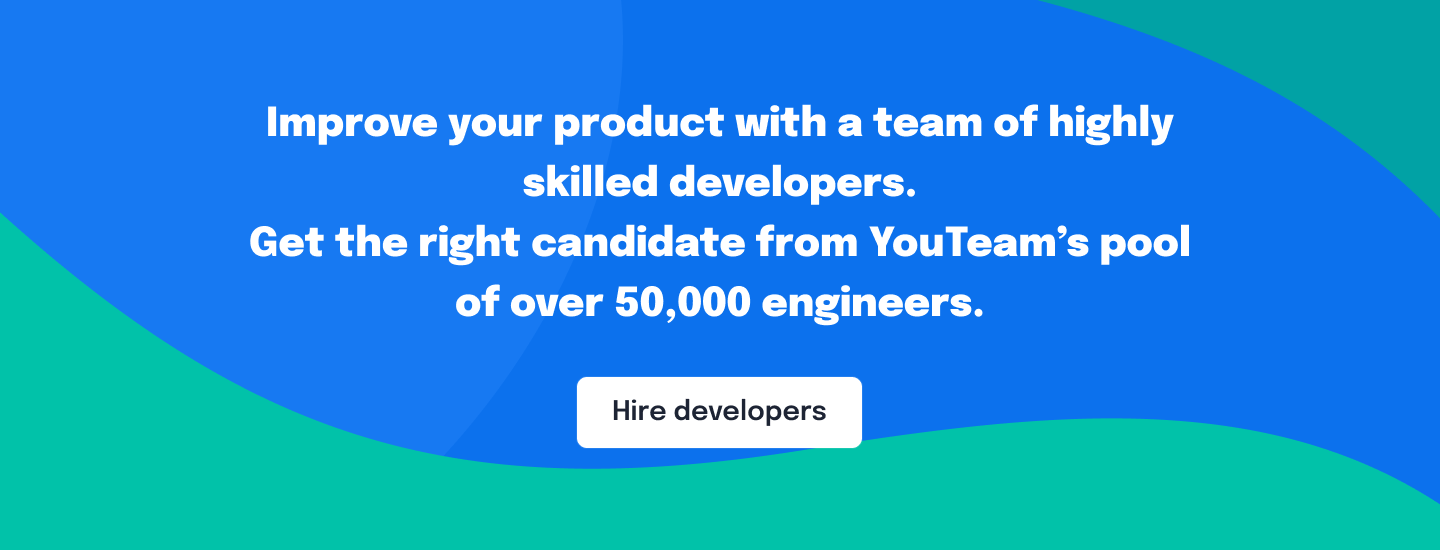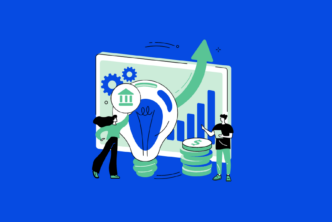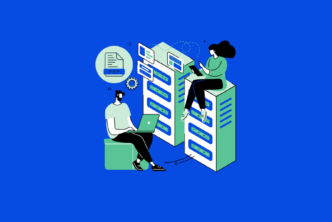Have you ever tried to create a software application only to end up stuck? If you did, then it’s high time you know about the software development life cycle (SDLC).
Table of Contents
What is the SDLC?
The SDLC consists of clearly defined processes for creating software. It provides detailed stages for the quick development of software. It states the design phase for the stages involved in product development. The phases of the SDLC include planning, creating, testing, and deployment. The SDLC helps to ensure that the end product satisfies the quality requirements listed.
What are the stages of the Software Development Life Cycle?
The SDLC has seven stages outlined below.
Stage 1: Planning Stage
The planning stage involves meeting different groups, such as the stakeholders, developers, and managers, to plan for both project and product management. It involves the drafting and creation of the working SDLC process that the development team will use in the development cycle. Planning provides time targets for each development stage so that the project gets completed within the stipulated time. It also states the number of resources required for the project to be complete and the desired production environment for the developers.
Stage 2: Feasibility or Requirements of Analysis Stage
The analysis stage is about collecting specific information necessary for the operation of the new system. During this stage, the following usually occurs:
- The definition of the software system.
- Listing of the system development requirements.
In coming up with alternatives to the system design, in-depth research is needed to ensure that the characteristics of the end product satisfy the customer’s expectations. Moreover, the drafting of the Software Requirements Specification (SRS) document gets done during this stage. The SRS document will include:
- Software requirements.
- Hardware requirements.
- Network requirements.
These requirements ensure that the product has all the necessary components needed for it to operate as intended. The requirement analysis stage ensures that all the resources are gathered before the development commences. It eliminates the possibility of costly last-minute decisions as everything will be laid out.
Stage 3: Design and Prototyping Stage
From the previous stages, developers will know what the software needs to accomplish and how it will do so. The design stage includes the details for the overall application. Aspects covered in this stage include:
- User experience.
- User interface.
- Database planning.
- Network requirements.
- Integration of different modules.
This stage expands the SRS document into a logically structured design document that will be usable by the developers. It also involves the building of the prototype model used to further refine the SDLC document.
Stage 4: Software Development Stage
The development stage is the section where the coding of the application occurs. The developers will use the SDLC and SRS documents to create an application in line with the system design concepts and required specifications. If earlier stages are thoroughly done, this stage is relatively easy to complete as all the work to be done on paper.
Moreover, developers must ensure that all the application requirements are met. Depending on the specifications of the software, different programming languages are used. For web-based product applications, languages like PHP, HTML, and CSS are incorporated. The developers must have the coding expertise of the required essential languages to produce a quality product.
Stage 5: Software Testing Stage
This stage is as crucial as the development stage. When software development is complete, the next step is for it to be tested. For software testing, the developers use the SRS document to check if the application’s functionality is in line with the required specifications. The testing stage involves cross-checking the code for bugs that might affect the operation of the application. Every bug detected during the test period is fixed, and the application gets tested again. This process of correcting and retesting continues until the operation of the application satisfies the quality standards defined in the SRS document. The software testing period can either be long or short, depending on different factors. Factors that can affect the duration of the testing period include:
- Expertise and experience of the developers.
- The complexity of the software, with more complex software development projects requiring more time.
- The number of application requirements that must be fulfilled.
Only after the acceptance testing is complete can the project proceed to the next stage.
Stage 6: Implementation and Integration
This stage commences once the software testing stage is complete. It involves the integration of different modules into a final product application. At this stage, some unit testing is done to check the proper integration and operation of different modules. If it satisfies all the product requirements, it becomes ready for release into the market.
Stage 7: Operations and Maintenance Stage
Once the product has been launched, SDLC continues. The developers switch into maintenance mode. It will enable them to swiftly attend to any arising issues without delay.
Some of the maintenance duties include:
- Solving bugs that went undetected before the application launch.
- Resolving issues that are being experienced and reported by end-users.
- Improving and upgrading operating systems to meet the new demand and expectations.
What are the SDLC Methodologies?
Software Development Life Cycle Models are a sequence of stages that are followed to reach the desired outcomes. The models provide guidelines for developers to produce the required application. Different solutions need various models for correct implementation. Below are some of the best SDLC models to use when preparing to develop an application.
Software Development Life Cycle Models
Agile model
The agile method is a dynamic and iterative SDLC model. It involves the collaboration of different teams to cover a certain section of product development within a stipulated amount of time. DevOps teams are common when using this model. It’s known to produce quality applications as the model involves continuous improvement of the product even whilst it’s in the development stage. Its flexibility allows changes to be effectively implemented with ease.
Pros
The continuous iterative software development process ensures the development of high-quality software. The collaboration of different team members makes troubleshooting and suggestion of solutions much easier. It enables the product to be quickly built. Its flexibility makes it possible to implement changes at any stage of the development cycle.
Cons
For it to work, a team of skilled developers is required. They must be agile to efficiently collaborate with others and implement any arising changes early. Moreover, for those not familiar with agile methodologies, the iteration process might get off track and end up delaying the completion of the development stage.
Waterfall model
It is the oldest model among others contained in this list. The development process is sequential and linear. It includes steps to follow for each stage, and each stage must be completed before moving on to the next one.
Pros
The outlined sequence makes it easy to follow. Defined stages with specific targets make accomplishing a stage easily.
Cons
It’s rigid and does not permit flexibility. Any change in a later stage will ultimately affect the completed ones. Moreover, it is more expensive and time-consuming to accomplish compared to other models.
Iterative model
The iterative model includes continuous improvement and repeat testing of the product application under development. This model is designed to counter the problems of the Waterfall model. Each stage has iterative cycles performed to further improve the product.
Pros
The incremental software development process facilitates better use of resources. It is also flexible: implementing changes becomes easy. The model is customer-focused. It enables the development of a product that will be easily usable by the end user.
Cons
It requires excessive research and customer involvement, which can be problematic at times.
Spiral model
The Spiral model uses the same Waterfall stages, which are: requirements, design, execution, testing, and product release. These stages are then laid into three distinct groups, which are planning, risk assessment, and prototype building. It is the most favored model for large projects, which are usually complex.
Pros
It provides close cost estimates, work required, and the duration of application development. Also, this model enables the early discovery of problems that are corrected immediately. Developers get involved from the start. It ensures that all parties are in consensus before product development commences.
Cons
It is time-consuming, and the completion of a stage takes longer. It is costly as it requires a team of experts to make a correct risk assessment of the product application under development.
V-model
The V-model is similar to the Waterfall model. It is an extension of the Waterfall model, and the V is short for verification and validation. A testing phase is included after each development phase. It ensures that problems are detected early and corrected at that particular stage.
Pros
Specific stage goals make it easy to use. The tests carried out after each stage help confirm that the project can progress to the next phase error-free. Bugs get detected and corrected early.
Cons
It is inflexible, and the readjustment of the product specifications is difficult and expensive when using the V-model.
Big bang model
The big bang model is the most flexible of all the models. It does not follow solid process models as it lacks a detailed outline. Usually, the developers start the project with just the budget and resources for the idea development.
Pros
It’s ideal for developing ideas, especially if the client is not sure of the product they want. It is also applicable for experimentation on certain concepts and aspects that can help developers in future projects.
Cons
The end software product may be different from what they expect. It’s a risky method to use, especially when the client is clear about what they want.
In the end, every model has its own advantages and disadvantages, making each one suitable for different software development situations. Therefore, let’s take a brief look at their advantages and disadvantages.
| SDLC model | Pros | Cons |
| Agile model | Continuous iterative development = high-quality software + collaborative flexibility at any stage. | It requires skilled, agile developers. Lack of familiarity with agile methodologies causes delays. |
| Waterfall model | Defined stages with specific targets make it easy to follow and accomplish each stage in the outlined sequence. | Lacks flexibility, with costly changes affecting completed stages. |
| Iterative model | Optimizes resources facilitate change implementation and yields a customer-focused product. | It requires excessive research and customer involvement, which can be problematic at times. |
| Spiral model | It costs and duration, detects issues early, and involves developers for consensus. | Long-stage completion and cost with the expert team are needed for accurate risk assessment. |
| V-model | Early bug detection and error-free progression with specific stage goals and tests. | Its inflexibility makes readjusting product specs difficult and expensive. |
| Big bang model | Ideal for developing uncertain ideas, experimentation, and future project aspects. | Risky method if client requirements are clear; the end product may differ. |
Predictive vs. Adaptive SDLC Models
Predictive SDLC
For the predictive Software Development Life Cycle, the final product is known. As such, the steps implemented lead to the creation of the final product. Mostly, it uses the Waterfall model whereby the steps are incremental; and a stage is done once the previous one has been completed.
Adaptive SDLC
Adaptive SDLC uses an agile method. It uses incremental and iterative development in which changes are made according to user feedback. Adaptive SDLC is more suited for products that exist in a dynamic environment and require constant enhancements.
Which one to use?
These two approaches are effective, but they are different. Depending on what you want to achieve and the type of software product you are developing, only one is best suited.
When is predictive SDLC the best?
- The product does not have any need for future changes. Changes in later stages complicate the project as earlier stages will need revision.
- The requirements and specifications of the product are clear to the end.
- There is a well-written project document to work with.
- You have worked on a similar project, and you are well aware of what needs to be done.
When is adaptive SDLC the best?
- The project contains changing parameters. In this case, flexibility is required to accommodate future changes.
- There is no fixed expected outcome. If the project requires innovation, it is the best approach to use.
- The product will be deployed in a rapidly changing environment.
- You are not sure of what you want.
Wrap up
SDLC facilitates and makes the creation of software applications easy. It has seven stages that enable organizations to plan for a product up until its deployment. The seven stages are:
Stage 1: Planning Stage
Stage 2: Feasibility or Requirements of Analysis Stage
Stage 3: Design and Prototyping Stage
Stage 4: Software Development Stage
Stage 5: Software Testing Stage
Stage 6: Implementation and Integration
Stage 7: Operations and Maintenance Stage
These stages are well-defined. As such, organizations can easily calculate the cost of required resources. It ensures that the product is of high quality and provides time frames for the completion of different stages and the entire product.
Next are SDLC methodologies. There are six best-listed models which are used for different types of projects. Some of the models are rigid, while some are flexible. Also, the pros and cons of each have been provided to help you make a better decision. Finally, two approaches of SDLC are defined, and a detailed brief on which to choose provided that your reason matches any of the causes.
FAQ
What is SDLC used for?
Advantages of SDLC
What disadvantages does SDLC have?
Importance of SDLC
Which SDLC model is the best and most commonly used?
Each model has its advantages and disadvantages. For example, the waterfall model is famous for its simplicity, as the development process in this model is linear and each phase begins only after the previous one is completed. However, it requires excessive research, and any change in a later stage will ultimately affect the completed ones.
The most commonly used SDLC model is Agile because its flexibility allows changes to be made at any stage of the development cycle. In addition, the collaboration of different team members makes troubleshooting and suggesting new ideas much easier.







